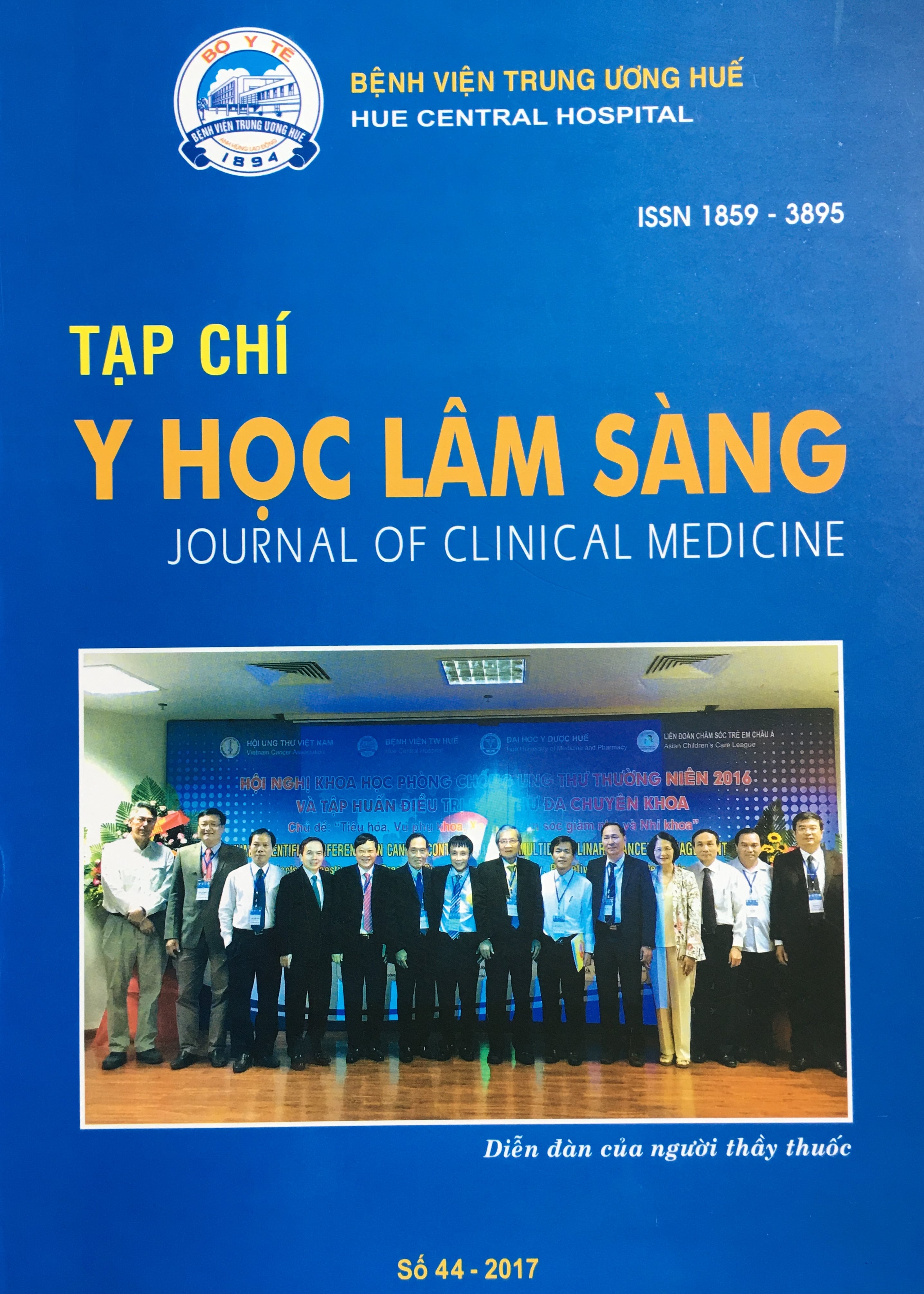Abstract
Objective: Case study of Laparoscopic hysterectomy and pelvic lymph node dissection in early endometrial cancer. Subjects and Methods: Case series, 26 patients with endometrial cancer FIGO I, undergone Laparoscopic Hysterectomy and Lymph Node Dissection by gynecologic oncology surgeons at HCM. City Cancer Hospital from February 2016 to May 2017. All patients have complete personal information, ultrasound, MRI, pathological results. Results: The mean operating time was 152 minutes. All the pelvic lymph nodes were removed. The mean estimated intraoperative blood loss was 99.5 ml. Complication was infection of the vaginal cuff (1/26 cases), the mean time of hospital stay was 7 days. Conclusion: Laparoscopic Hysterectomy and Lymph Node Dissection is a safe, feasible and effective procedure in treating early endometrial cancer This is the good technique in surgery for cancer patients due to the little blood loss, hospital stay, faster recovery, cosmetic result, sufficient dimensions and reasonable cost
References
Acoby VI., Autry A, Jacobson G. Domush R Nakagawa S, Jacoby A (2009), Nationwide use of laparoscopic hysterectomy compared with abdominal and vaginal approaches, Obstet. Gynecol, 114(5), pp. 1041-1048
Childers JM, Surwit EA (1992), Combined laparoscopic and vaginal surgery for the management of two cases of stage I endometrial cancer, Gynecol. Oncol, 15(1), pp. 16 51.
Cho YH, Kim DY, Kim JH, Kim YT, Nam JH (2007), Laparoscopic management of early uterine cancer: 10-year experience in Asan Medical Center. Gynecol Oncol. 106, pp. 585-90.
Fagotti A, Boruta, Scambia G, Fanfani F, Paglia A, Escobar PF (2012), First 100 carly endometrial cancer cases treated with laparoendoscopic single-site surgery: a multicentric retrospective study, Am. J. Obstet. Gynecol. 206(4), 353.el-353.06. 5. Hoekstra AV, Jairam-Thodla A, Rademaker A et al (2009), The impact of robotics on practice management of endometrial cancer: transitioning from traditional surgery, Int. J. Med. Robot, 5(4), pp.392-397.
JonsdottirGM, Jorgensen S, Cohen SLetal (2011), Increasing minimally invasive hysterectomy. effect on cost and complications, Obstet. Gynecol, 117(5), pp. 1142-1149.
Malzoni M, Tinelli R, et al (2009), Total laparoscopic hysterectomy versus abdominal hysterectomy with lymphadenectomy for early stage endometrial cancer: a prospective randomized study, Gynecol Oncol, 112, pp. 126-33.
Walker JL, Piedmonte MR, Spirtos NM, Eisenkop SM, Spiegel G, Mannel RS, el al (2010), Recurrence and survival after randomization to laparoscopy versus laparotomy for comprehensive surgical staging of uterine cancer: Gynecologic Oncology Group Study LAP2, 2010 SGO 41st Annual Meeting, Abstract LBAI

This work is licensed under a Creative Commons Attribution-NonCommercial-NoDerivatives 4.0 International License.
Copyright (c) 2025 Journal of Clinical Medicine Hue Central Hospital

